





Remikeyd
Application instruction:
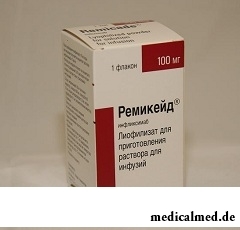 Remikeyd – the selection immunodepressive means.
Remikeyd – the selection immunodepressive means.
Form of release and structure
Dosage form – lyophilisate for preparation of solution for infusions: the dense mass of white color without foreign inclusions and signs of fusion (on 100 mg in glass bottles with a capacity of 20 ml, in a cardboard pack 1 bottle).
Active ingredient of Remikeyd – инфликсимаб, in 1 bottle – 100 mg.
Auxiliary components: dihydrophosphate sodium monohydrate, hydrophosphate sodium dihydrate, polysorbate 80, sucrose.
Indications to use
- The disease Krone of average or heavy (including with formation of fistulas) degree in an active form at patients is more senior than 18 years for which standard treatment using glucocorticosteroids (GKS) and/or immunodepressants (at fistulas – a drainage, antibiotics and immunodepressants) is contraindicated or inefficient, or is intolerable – therapy is directed to decrease in symptoms of a disease, achievement and maintenance of remission, closing of fistulas and reduction of their number, healing of mucous membranes, a dose decline or cancellation of GKS, the general improvement of a state;
- Disease Krone in an active form at children's age (6-17 years) – for treatment of average and heavy degree of a disease at intolerance, inefficiency or contraindications to standard therapy, Remikeyd's use is directed to reduction of symptoms of a disease, achievement and maintenance of remission, a dose decline or cancellation of GKS, improvement of quality of life of the patient;
- The pseudorheumatism in an active form (including heavy progressing), in a combination with a methotrexate, including the patients who underwent preliminary inefficient therapy by a methotrexate and other antiinflammatory basic drugs – drug promotes reduction of symptoms of a disease, delay of processes of damage and improvement of a functional condition of joints;
- The progressing psoriasis arthritis in an active form (monotherapy or in a combination with a methotrexate) at the inadequate answer to basic antiinflammatory drugs – use of drug allows to lower arthritis symptomatology, to improve functional activity of the patient, and at peripheral psoriasis polyarthritis – to reduce extent of radiological progressing;
- Ulcer colitis at adult patients for whom traditional methods of treatment are insufficiently effective – for healing of a mucous membrane of intestines, reduction of symptoms, decrease in need for hospitalization, doses or cancellations of GKS, establishment and maintenance of remission, improvement of quality of life of the patient;
- Ulcer colitis of average and heavy severity at children's age (6-17 years) – after standard therapy with the insufficient answer corticosteroids, Azathioprinum or 6 Mercaptopurinum, and also at children with intolerance or contraindications to standard therapy;
- Psoriasis in a medium-weight and severe form – at intolerance, insufficient efficiency or contraindications to the system standard treatment including PUVA-therapy, cyclosporine or a methotrexate for reduction of the inflammatory phenomena in skin and recovery of normal process of a differentiation of keratinotsit;
- Ankylosing spondylitis with laboratory signs of inflammatory activity and strong axial symptoms – for improvement of functional activity of joints and reduction of symptoms of a disease at patients with lack of the response to standard therapy.
Contraindications
- Chronic heart failure of the III-IV stage on NYHA classification;
- Tuberculosis, sepsis, abscess, opportunistic infections and other heavy infectious pathologies;
- Period of pregnancy and breastfeeding;
- Age up to 6 years at treatment of ulcer colitis and disease Krone;
- Age up to 18 years;
- Hypersensitivity reactions on drug components.
With care Remikeyd to patients with chronic heart failure of the I-II stage, a persistent or recurrent infection in the anamnesis, the accompanying therapy by immunodepressants, demyelinating pathologies, a hepatitis B virus is recommended to appoint, at the instruction in the anamnesis or the continuing treatment of malignant new growths, smoking (because of the increased risk of development of malignant new growths), prolonged use of PUVA-therapy in the anamnesis.
Route of administration and dosage
Remikeyd's solution is intended for intravenous (in/in) drop introductions in the conditions of a hospital in the presence of means of acute management (adrenaline, corticosteroids, antihistamines, the medical ventilator).
Infusions last not less than two hours, during and within 1-2 hours after introduction of the patient has to be under observation of the doctor capable to find infusional reactions.
For decrease in risk of development of infusional reactions reduction in the rate of introduction and preliminary administration of paracetamol, a hydrocortisone, antihistamines is shown.
Prepare solution in sterile conditions with observance of aseptic rules before direct introduction. Contents of a bottle are dissolved by 10 ml of water for injections, directing a water stream on a bottle wall. Easy rotary motions carefully dissolve lyophilisate, avoiding stirring. At foaming solution is settled by 5 minutes. The received solution has to have opalescent structure with colourless or poorly yellow coloring. Existence of a small amount of translucent fine particles is allowed. It is impossible to use solution with other color or dark particles.
Then 0,9% chloride sodium solution for injections bring the volume of the received solution to 250 ml and carefully mix. It is impossible to administer not divorced drug!
For introduction it is necessary to use infusional system with the built-in sterile depyrogenized filter with a size of time no more than 1,2 microns.
Mixing with other medicines in one infusional system is not allowed. Unused solution is subject to utilization.
The doctor having experience of diagnosis and treatment of an ankylosing spondylitis, pseudorheumatism, psoriasis, psoriasis arthritis, inflammatory pathologies of intestines has to make appointment, calculation of a necessary dose and duration of treatment.
During use of drug it is necessary to optimize the accompanying therapy by immunodepressants or corticosteroids.
The recommended dosing:
- Pseudorheumatism (in a combination with a methotrexate): an initial single dose – 3 mg on 1 kg of weight of the patient, in 2 and 6 weeks repeat introduction in the same dose. After a phase of induction of the patient transfer to a maintenance therapy in the form of performing infusions every 8 weeks. Usually clinical effect occurs in 12 weeks. In case of the insufficient answer or the subsequent loss of action of therapy perhaps step-by-step increase in a dose from calculation for 1,5 mg on 1 kg of weight, but no more than 7,5 mg on 1 kg every 8 weeks, or reduction up to 4 weeks of intervals between infusions in an initial dose. After achievement of the clinical answer use of drug is continued in the corresponding mode and a dose. If in 12 weeks of therapy, including using reduction of intervals between infusions or increases in a dose of drug, improvement of a condition of the patient does not come, the doctor has to make the decision on expediency of further use of drug;
- Active form of a disease Krone at adults (average or heavy severity): the initial dose – on 5 mg on 1 kg, in 2 weeks is carried out the second infusion in the same dose. If the effect after two infusions is absent, further use is inexpedient. At positive effect treatment is continued, having chosen one of the offered options. In the first case to the patient in a dose of 5 mg on 1 kg administer the drug 6 weeks later after the first infusion, further – every 8 weeks. For achievement of effect in the period of the supporting phase increase in a dose to 10 mg on 1 kg is possible. The second option assumes repeated administration of drug at a disease recurrence in a dose of 5 mg on 1 kg;
- Active form of a disease Krone at children at the age of 6-17 years (average or heavy severity): an initial dose – 5 mg on 1 kg, then – in the same dose with an interval of 2 and 6 weeks, further – every 8 weeks. In the absence of effect after 10 weeks of therapy Remikeyd is not recommended to apply further. For maintenance of clinical effect reduction of an interval between infusions is shown, in this case the risk of development of undesirable reactions increases. In the absence of additional effect after reduction of an interval between infusions careful assessment of expediency of continuation of treatment is required. Drug is used at co-administration of immunomodulators: 6 Mercaptopurinum, methotrexate or Azathioprinum;
- Disease Krone with fistulas at adults: an initial dose – on 5 mg on 1 kg of weight of the patient once, in 2 and 6 weeks infusion is repeated in the same dose. In the absence of the clinical answer drug is cancelled. If after three procedures the effect is observed, treatment is continued by introduction of an initial dose every 8 weeks (in case of need the dose of a maintenance therapy can be raised to 10 mg on 1 kg) or applied only at a disease recurrence. If there are no signs of therapeutic effect after change of a dose, assessment of expediency of further treatment is required by drug;
- Ulcer colitis at adults and children at the age of 6-17 years: an initial dose – on 5 mg on 1 kg, in 2 and 6 weeks the drug is administered in the same dose, further – every 8 weeks. Approach of therapeutic effect perhaps after introduction of three doses. In the absence of signs of improvement of a condition of the patient the doctor can make the decision on drug withdrawal. If necessary increase in a dose of adults to 10 mg on 1 kg is shown;
- Ankylosing spondylitis, psoriasis arthritis: an initial dose – on 5 mg on 1 kg, then – in the same dose in 2 and 6 weeks, further – every 6-8 weeks. In the absence of effect after introduction of the two first doses at treatment of an ankylosing spondylitis it is inexpedient to continue Remikeyd's use;
- Psoriasis: an initial dose – 5 mg on 1 kg, in the same dose in 2 and 6 weeks repeat introduction, further – every 8 weeks. In the absence of effect after introduction of four doses treatment is inexpedient to continue.
Patients who well transferred the first 3 two-hour infusions can increase the speed of the subsequent infusions to introduction duration at 1 o'clock.
After a break in a maintenance therapy it is necessary to use drug repeatedly at all clinical indications in the mode of one infusion (without induction phase), and then to pass to a maintenance therapy.
Efficiency and safety of drug at patients are more senior than 65 years is not established.
Possibility of repeated appointment of Remikeyd:
- Pseudorheumatism and disease Krone: in case of a palindromia within the first 16 weeks after the last infusion. Safety and efficiency of repeated introduction in later period is not established. In clinical trials infrequent reactions of hypersensitivity at an interval without use of drug before repeated introduction were observed less than 1 year;
- Ulcer colitis, the psoriasis arthritis ankylosing a spondylitis: safety and efficiency of other scheme of treatment (not each 6 or 8 weeks) at repeated use are not established;
- Psoriasis: introduction of one dose of drug after a break in 20 weeks is less effective (in comparison with the initial induction mode) and is accompanied by higher risk of infusional reactions. Repeated appointment in the mode of induction can cause heavy extent of infusional reactions.
Side effects
- Infectious and parasitic diseases: very often – a viral infection (including herpes, flu); often – bacterial infections (including cellulitis, abscess, sepsis); infrequently – fungal infections (including candidiasis), tuberculosis; seldom – invasive fungal infections (histoplasmosis, a pneumocystosis, an aspergillosis, кокцидиомикоз, a zymonematosis, a cryptococcosis), meningitis, bacterial infections (salmonellosis, an atypical mikobakterialny infection, listeriosis), a Cytomegaloviral infection, reactivation of hepatitis B, parasitic infections;
- System of a hemopoiesis: often – a leukopenia, a neutropenia, a lymphadenopathy, anemia; infrequently – a lymphocytosis, thrombocytopenia, a lymphopenia; seldom – a trombotichesky Werlhof's disease, an agranulocytosis, a pancytopenia, an idiopathic Werlhof's disease, hemolitic anemia;
- Nervous system: very often – a headache; often – dizziness, a hypesthesia, paresthesia, вертиго; infrequently – a neuropathy, a convulsive attack; seldom – demyelinating pathologies of the central nervous system (including multiple sclerosis, an optic neuritis), a cross myelitis, demyelinating diseases of a peripheral nervous system (a multifocal motor neuropathy, a syndrome to Giyena-Barra, a chronic inflammatory demyelinating polyneuropathy);
- Alimentary system: very often – nausea, an abdominal pain; often – diarrhea, dyspepsia, a lock, gastrointestinal bleeding, a gastroesophagal reflux; infrequently – an intestinal stenosis, perforation of intestines, a cheilitis, a diverticulitis, pancreatitis;
- Respiratory system: very often – sinusitis, upper respiratory tract infections; often – short wind, nasal bleeding, lower respiratory tract infections (including bronchitis, pneumonia); infrequently – a bronchospasm, a fluid lungs, a pleural exudate, pleurisy; very seldom – intersticial pulmonary fibrosis, an intersticial pneumonitis, rapid progressing of intersticial pathologies of lungs;
- Cardiovascular system: often – heartbeat, arterial hypotension, tachycardia, inflows (sometimes strong), hypertensia, an ecchymoma; infrequently – arrhythmia, the accruing heart failure, bradycardia, a syncope, thrombophlebitis, a hematoma, disturbance of peripheric circulation; seldom – cyanosis, circulator insufficiency, a pericardiac exudate, a vasospasm, petechias; frequency is unknown – a myocardial infarction or ischemia of a myocardium during the period or within 2 hours after infusion;
- Liver and biliary tract: often – increase in activity of liver enzymes, an abnormal liver function; infrequently – cholecystitis, hepatitis, jaundice, injury of hepatocytes; seldom – autoimmune hepatitis; very seldom – a liver failure;
- Not specified, high-quality and malignant new growths, including polyps and cysts: seldom – a melanoma, Hodzhkin's disease, a nekhodzhkinsky lymphoma, a lymphoma, a leukosis; frequency is unknown – Merkel's carcinoma, a hepatolienal T-cellular lymphoma (a disease Krone and ulcer colitis at teenagers and young people);
- Immune system: often – allergic reactions of respiratory genesis; infrequently – a volchanochnopodobny syndrome, anaphylactic reactions, a serum disease, reactions typical a serum disease; seldom – a vasculitis, reactions as a sarcoidosis, an acute anaphylaxis;
- Mentality: often – sleeplessness, a depression; infrequently – drowsiness, confusion of consciousness, amnesia, nervousness, concern; seldom – apathy;
- Skin and hypodermic fabrics: often – an itch, rash, a xeroderma, psoriasis (including pustular, preferential palmar and bottom form and initially diagnosed), a small tortoiseshell, the increased perspiration, an alopecia, fungal dermatitis; infrequently – an onychomycosis, violent rash, a furunculosis, seborrhea, a rozatsea, skin papilloma, disturbance of a xanthopathy, a hyperkeratosis; very seldom – a mnogoformny erythema, Stephens-Johnson's syndrome, a toxic epidermal necrolysis;
- Organ of sight: often – conjunctivitis; infrequently – periorbital hypostasis, barley, a keratitis; seldom – an entophthalmia; frequency is unknown – tranzitorny loss of sight during the period or within 2 hours after infusion;
- Urinary system: often – an infection of urinary tract; infrequently – pyelonephritis;
- Musculoskeletal system: often – a dorsodynia, an arthralgia, a mialgiya;
- Reproductive system: infrequently – a vaginitis;
- Local reactions: often – hypostasis and other reactions in the place of an injection;
- Laboratory indicators: infrequently – emergence of autoantibodies; seldom – disturbance of development of factors of a complement;
- Others: very often – pain, infusional reactions; often – fatigue, a fever, fever, a stethalgia; infrequently – delay of healing of wounds; seldom – emergence of the granulematozny centers.
Special instructions
The risk of development of acute infusional reactions exists both during infusion, and within several hours after its termination. The immediate termination of administration of drug at emergence of acute reaction is required.
The accompanying use of immunodepressants reduces probability of development of infusional reactions.
According to clinical trials cases of development of reactions of hypersensitivity of the slowed-down type appear more often at increase in an interval between procedures of introduction of Remikeyd. Therefore when resuming treatment after a long break it is necessary to control emergence of signs and symptoms of reactions of hypersensitivity of the slowed-down type.
Prior to therapy, during its carrying out and within 6 months after the end of use of drug careful control of a condition of the patient regarding detection of symptoms of an infection, including tuberculosis is required. Patients should be careful, avoiding possible influence of various risk factors of development of infections. At identification of symptoms of a serious infection or sepsis treatment by drug is cancelled as risk of a lethal outcome very high.
With several or considerable risk factors of development of tuberculosis the patient prior to use of drug should appoint antitubercular therapy.
To patients with acute purulent fistulas at a disease the Krone is recommended to begin treatment only after inspection regarding identification of other possible center of an infection (including abscess) and its elimination.
In case of reactivation of the hepatitis B, emergence of jaundice or increase in activity of alaninaminotranspherase exceeding fivefold value of the upper bound of norm Remikeyd it is necessary to cancel.
Patients of children's age should undergo the full vaccination corresponding to the current calendar of preventive inoculations prior to treatment.
Clinical trials confirmed more frequent development of infections in patients of children's age, than in adults.
It is necessary to be careful at control of vehicles and mechanisms after administration of drug.
Medicinal interaction
At a combination therapy with a methotrexate or other immunomodulators their influence on decrease in antibody formation to an infliksimab and increase in its concentration in a blood plasma is possible.
Clinically significant influence of corticosteroids on pharmacokinetics of an infliksimab it is not established.
Contraindicated simultaneous use with other biological means, drugs of an anakinra and an abatatsept, live vaccines.
Terms and storage conditions
To protect from children.
To store at a temperature of 2-8 °C, for transportation within 48 hours temperature level to 25 °C is allowed.
Period of validity – 3 years.
Name of drug
Price
Drugstore
If your liver ceased to work, death would come within a day.
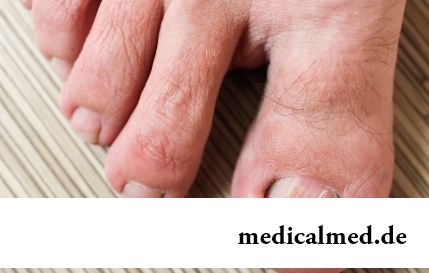
The word "onikhokriptoz" is unfamiliar to most of people, meanwhile quite so physicians call very widespread problem: growing...
Section: Articles about health
Each failure in work of bodies and systems of a human body is, as a rule, shown by the whole complex of symptoms. In particular, malfunctions with health often cause emergence of cosmetic defects in the form of rashes on a face. Experienced doctors know that локализац...
Section: Articles about health
The thought that the mass of their body is too big at least once in life visits from 80 to 95% of women. Many women are so obsessed with this idea that constantly try all new and new ways of weight reduction. A considerable part of these techniques is ineffective, and some in general are unsafe for health....
Section: Articles about health
It is pleasant to state a possibility of improvement of quality of life of people with problems of functioning of secretory system. By efforts that...
Section: Articles about health
About 20% of the population of our planet have a hypertension (permanent increase in arterial pressure). This disease has an adverse effect on the standard of living, reduces working capacity, and in the absence of systematic treatment threatens with such complications as a heart attack...
Section: Articles about health
From sexual contacts each person can test insufficiently strongly expressed sexual desire or lack of satisfaction from time to time. However when it happens regularly, it is an occasion to think about health. Most of people does not hurry to ask similar questions physicians: one consider that they will be able to cope with malfunctions independently, others hesitate to report to strangers about so delicate problems and hope that troubles will stop by itself....
Section: Articles about health
Is told about advantage of domestic animals for development of the child much. But many parents nevertheless do not hurry to bring pets as about...
Section: Articles about health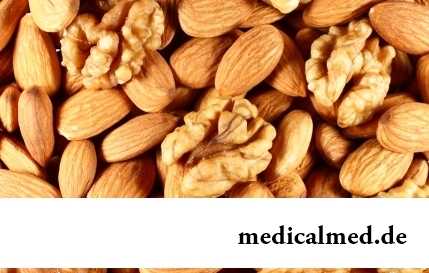
For the last decades the diabetes mellitus of the second type became really world problem. The number of cases annually increases, and average age of patients for whom the illness is diagnosed, steadily decreases. Specialists consider that one of osno...
Section: Articles about health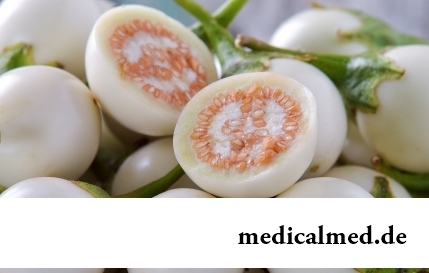
It is possible to find the extensive range of fruit and vegetables in modern shops. Russians already got used that on counters there is not only a seasonal domestic production, but the vegetables and fruit which are grown up in the countries with more comfortable conditions of cultivation at all seasons of the year. However what we see in shops and in the vegetable markets, is only a small part of those edible plants with which the nature is so rich. Today we want to acquaint the reader with rare and very useful vegetables which on...
Section: Articles about health
Good appetite was always considered as a sign of good health. The correct operation of the mechanism which is responsible for the need for nutritious...
Section: Articles about health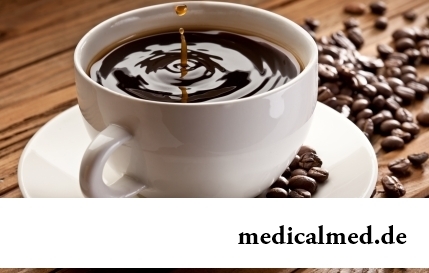
Coffee – favourite drink of many. For the last decades it more than once already declared very harmful, extremely useful and even necessary for normal life activity. In spite of the fact that this product became for us usual for a long time, exists much...
Section: Articles about health
You are office worker, the driver, the fan of winter sports or do not think of life without bicycle? You lead a slow-moving life and you move on the city only on the car? You have no constant partner and you do not love the protected sex? Attention! You unambiguously are a potential target for prostatitis. It is not necessary to panic, it is necessary to work....
Section: Articles about health
For many spouses the question of planning of a family is one of the main. The choice problem effect at the same time comes out on top...
Section: Articles about health
All diseases from nerves – in this joke a big element of truth, are said by doctors. Constant stresses lead to decrease in protective forces of an organism, and it becomes vulnerable for a set of diseases. It is wrong to think that the stress is a problem of the present. Life of people and hundred...
Section: Articles about health
Any of us is not insured from a heavy illness of the loved one. Happens and so that someone from family members becomes the bed patient, and remains in such state for a long time. It extremely suppresses both the most injured, and all its house which life considerably changes....
Section: Articles about health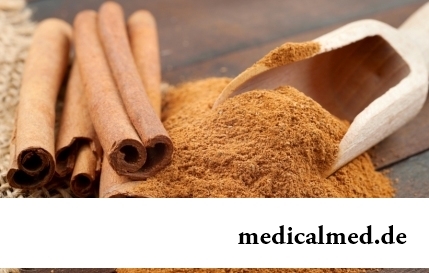
Ayurveda - the most ancient tselitelsky practice which came to us from India. It represents the doctrine about maintenance physical, ps...
Section: Articles about health
Obesity is called a disease of 21 centuries, for the last 100 years the number of the people suffering from excess body weight considerably increased. Statistically, on Earth already about 1,5 billion corpulent people, and 500 million from them have extreme degree of completeness, are negative...
Section: Articles about health
The phenomenon of improvement of a condition of the patients at administration of drugs who are not containing active agents, so-called effect of placebo is known long ago. At the end of the 18th century the American doctor Perkins began to treat people the "miracle" sticks made of alloy of steel and brass. Was for several minutes to press such subject enough to a sore point that it became much easier for the patient. Having suspected Perkins of charlatanism, his colleagues tried to repeat "miracle" by means of sticks, steles...
Section: Articles about health
The immunity role in growth of the child is invaluable. The proteins-immunoglobulins produced by immune system preserve the child against diseases...
Section: Articles about health
What is in our understanding weeds? It plants which are considered to be suitable only for compost pits and feeding of animals. Meanwhile, among the weeds growing literally under legs it is possible to find the mass of the officinal herbs possessing invaluable Paul...
Section: Articles about health
Heart disease and blood vessels lead to disturbance of blood supply of bodies and fabrics that involves failures in their work, deterioration in health of the person, decrease in its working capacity and standard of living. Annually more than 17 million inhabitants of our planet perish from pathologies such....
Section: Articles about health
Many of us, probably, noticed more than once that from intellectual loadings at some point the brain as though "overheats" also "assimilation"...
Section: Articles about health
Dietary supplements (dietary supplements) for the last decades were so thoroughly included into our life that, apparently, it is already impossible to find the person who at least once did not try them. At the same time, most of our compatriots have a vague idea about...
Section: Articles about health
For the time being the perspective of heart diseases seems to most of people remote and foggy. But sooner or later practically each adult faces extremely unpleasant feelings: sudden stethalgia. To be consoled at this time in a thought of what for a heart attack still early, will hardly turn out: if the person is impressionable, he, as a rule, has feeling of panic and fear of fast death. And meanwhile, it is very often possible to confuse pains with cardiac pains невралгическог...
Section: Articles about health
Childbirth is the most important event in life of each woman. We are women we give birth to the new little man on this light. Now...
Section: Articles about health
Almost each of us during life faced dissatisfaction with own body. At such moments, as a rule, we begin to shame ourselves, urgently we go on the most rigid diet promising minus of 10 kg in a week, or we exhaust ourselves in the gym to полусм...
Section: Articles about health
Iodine - one of thirty most important microelements in our organism. The main role of iodine consists in synthesis of thyroid hormones of a thyroid gland - the substances which are responsible for the majority of exchange processes of an organism. It is known that thyroid hormones consist of iodine more than for 65%. The lack of iodine leads to decrease in production of hormones and, as a result, development of a hypothyroidism. The long condition of deficit can become a source of problems of the cardiovascular, bone, digestive SI...
Section: Articles about health

